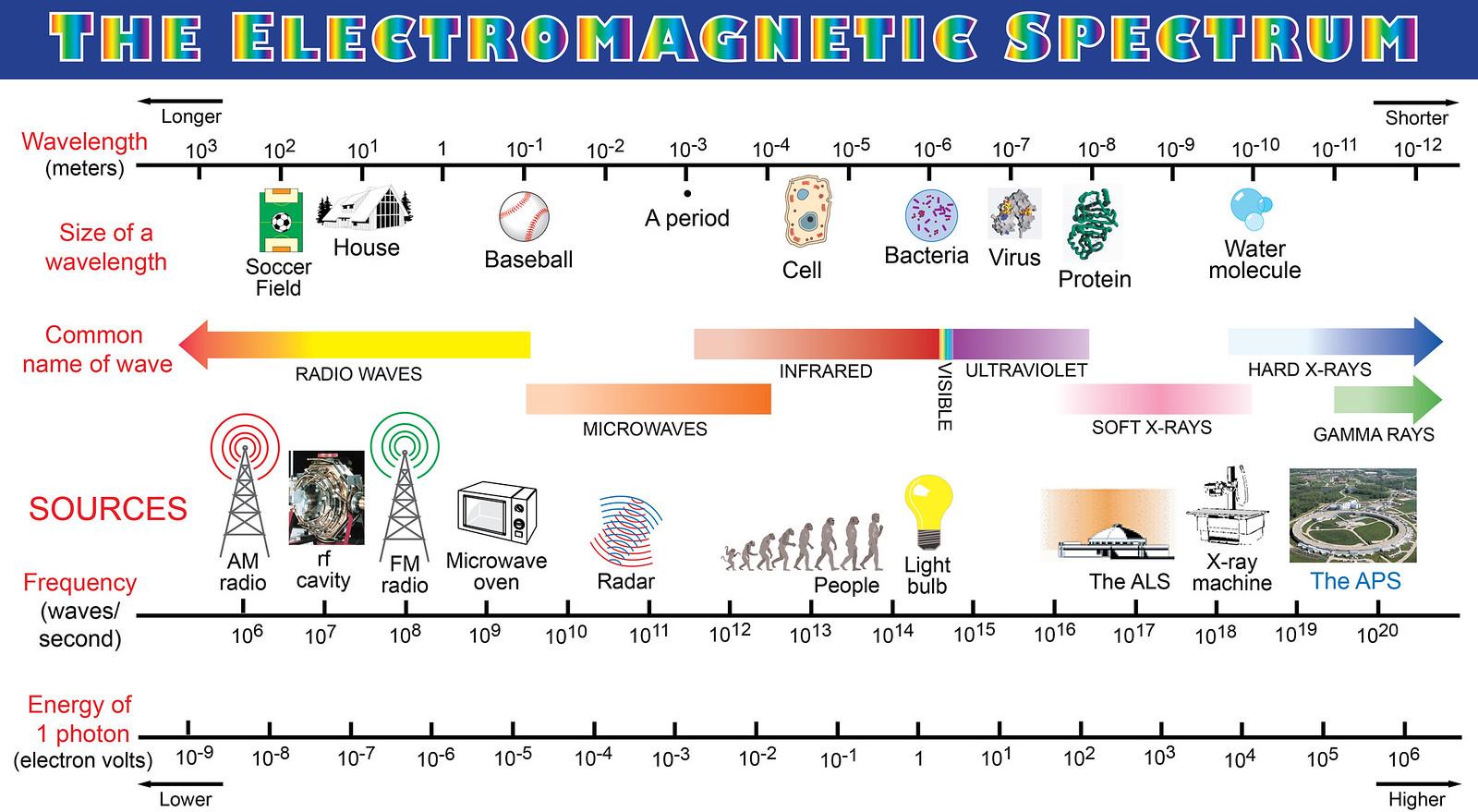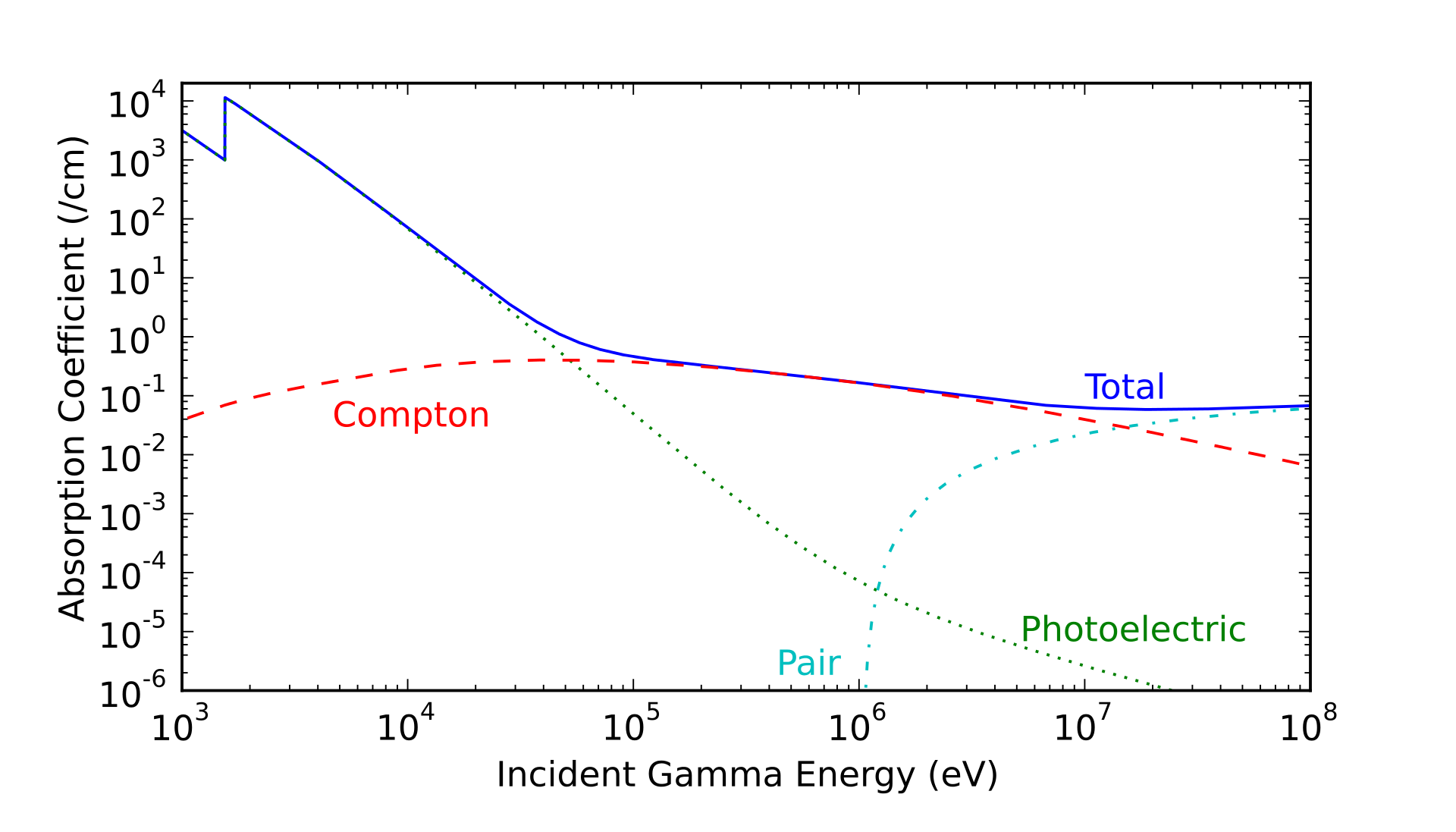To put it simply. We group our EM waves into groups such as X-rays, microwaves, visible light etc. I was wondering, if the properties of say, x-rays, slowly change into the properties of say, gamma rays, or as soon as the wavelength is larger than 10 picometers it's properties become that of an x-ray. If it's the former, how do we calulate the standards for identifying a wave.
-
8$\begingroup$ You're discovering something very common with words: they help us segment reality into discrete chunks we can easily talk about, but 99% of the time the reality is actually continuous. There is no point at which a microwave instantly turns into a radio wave, just like there's no point at which red instantly turns into green, or black turns into white, or "a pile of sand" turns into "a big pile of sand", or whatever. $\endgroup$– knzhouCommented Oct 22, 2019 at 17:00
3 Answers
The EM waves form a continuous spectrum, thus your first description of a gradual change in wave behaviour is correct. However, because of this; there is also no precise way of determining exactly at which frequency a category of EM wave starts or finishes at.
In fact, sometimes the classification of waves can be so hand wavy that the typical description of an EM wave: $$c=f\lambda$$ is treated as a secondary determinant for which category an EM wave belongs to! One such example of this is with X rays and $\gamma$ rays. Their frequencies overlap one another at approximately $10^{18}\:\mathrm{Hz}$ so it is difficult to quantitatively differentiate higher frequency X rays and lower frequency $\gamma$ rays. Instead, we let the origin of the waves decide, $\gamma$ rays are emitted from the nucleus of the atom while X rays are emitted from outside the nucleus; by excited electrons.
To conclude, the EM spectrum can in no way be easily divided into discrete categories and as such there is always some overlap between adjacent categories of wave.
-
8$\begingroup$ FWIW, the situation with gamma rays isn't clear-cut. Some people let the origin be the deciding factor, but other people go by the energy. I prefer the former approach, but it does mean that there are some low energy gammas that are well below X-ray frequency, in the ultraviolet band of the spectrum. $\endgroup$– PM 2RingCommented Oct 21, 2019 at 18:19
-
4$\begingroup$ I'm a (former) nuclear physicist. People I worked with usually referred to things around 50 or 100 keV as x-rays, even if emitted from the nucleus. But the general idea of this answer seems right to me. $\endgroup$– user4552Commented Oct 21, 2019 at 23:41
-
2$\begingroup$ Would you say that due to the fact that naming the waves only supplies a convenience for people, different contexts require different methods of naming the waves in order to better a contextual understanding? $\endgroup$– yoloCommented Oct 22, 2019 at 11:01
-
1$\begingroup$ Of course, the frequency/wavelength changes depending on your reference frame. $\endgroup$ Commented Oct 22, 2019 at 21:21
-
3$\begingroup$ @UbaidHassan I meant to use / as a shorthand for "or" :-) but in any case it is $f \lambda = c$ that remains constant, not $f / \lambda = f \lambda / \lambda^2 = c / \lambda^2$. $\endgroup$ Commented Oct 22, 2019 at 22:14
The boundaries between the different spectral regions of the electromagnetic spectrum are 'soft', and indeed there is often overlap between neighbouring bands, which makes for a better representation of the spectrum:
Image source: Argonne National Laboratory
Spectral regions like "infrared" or "soft x-ray" are distinguished by various aspects of the interaction of light with matter at those frequencies, shaping what we can do with them and the equipment necessary to interface with that radiation.
Thus, for example, infrared radiation (roughly speaking) is that radiation that's longer in wavelength than what the eye can see but which can still be manipulated using vaguely "optical" means, whereas microwaves are the kind of waves that you interact with using antennas and metal waveguides. So what do you do if there are wavelengths where (at least for some purposes and on some situations) there are 'optical' methods, but also antennas? The label of whether you want to treat it as IR or as a microwave depends on what you want to do with it.
On the other hand, some of the transitions are sharp, because they need to be sharp to benefit the governance systems of our technological devices. Thus, e.g., the boundary between the VHF and UHF radio bands is sharp at 300 MHz, not because of any specific change in the behaviour of radio at that frequency, but because it is legally advantageous to have clear boundaries between the different bands.
However, none of those transitions are really sharp as regards the physical processes, and there is always a smooth turnover from the behaviour in one band to the behaviour in its neighbours.
For the specific case of gamma/x-rays, one way to look at them is by the relative cross sections of the ways they can interact with matter. Here (from wikipedia) is a graph of such a thing for high energy photons interacting with aluminium:
The blue line is the total absorption coefficient, and both axes are on log scales. You can see that at low energy the photoelectric effect dominates: the photon hits an electron and it absorbs essentially all of the energy, ejecting it from the atom. Next is the Compton scattering, which is fairly flat over a huge energy range. This happens when a photon scatters off an electron, losing some but not all of its energy to the electron.
The one hard limit here is the minimum photon energy required for pair production. This is when a photon, in the strong electric field near the nucleus, is converted into an electron and a positron (other particle-antiparticle pairs are possible at higher energies, but this is the lowest energy one). To do this the photon must have energy equivalent to twice the electron mass, $2 \times 511 \space\mathrm{keV}$ due to our old friend $E = mc^2$. The thing that's kind of interesting to me is that although the x-ray/gamma ray distinction varies by field, it seems that no one actually uses this objective hard limit to distinguish between them. Wikipedia claims that astronomers make the cut for x-ray astronomy to gamma ray at $100 \space\mathrm{keV}$, which is an order of magnitude lower.
The point is this is the kind of thing that makes sociologists say that science is a social construct: If there were a society in alpha centauri doing science, would they make a distinction between photons above and below $100 \space\mathrm{keV}$? almost certainly not. There's some physical basis to where we make the distinctions, but in large part it's due to specific quirks of history.
-
$\begingroup$ Is the astronomical 100keV threshold related to the upper limit for where low incidence mirrors can be used to focus xrays vs having to use a sensor without any concentrating optics? $\endgroup$ Commented Oct 22, 2019 at 18:25
-
$\begingroup$ @DanNeely I don't know how old it is, but this NASA page claims an upper limit of around 40 keV imagine.gsfc.nasa.gov/news/xray_mirror.html. Wikipedia's claim is that 100 keV was about the limit of artificially generated x-rays, but who knows how truthful that is $\endgroup$– llamaCommented Oct 22, 2019 at 18:29
-
$\begingroup$ NuSTAR's mirrors (2012) work at up to 79 keV; but if the limit was only half that 20 years ago it's probably too recent an advance to be driving convention. $\endgroup$ Commented Oct 22, 2019 at 18:34


